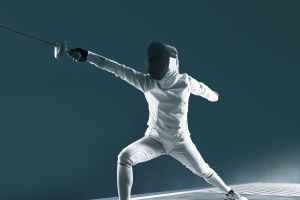Have you ever wondered what really goes into preparing for a Grand Slam tournament? It's not just about hitting balls on the court—there's a complex mix of physical training, strategic planning, and mental conditioning that turns good players into champions.
Today, let's dive into one specific yet crucial piece of this puzzle: how tennis players train their endurance and mental resilience to handle the grueling demands of Grand Slams.
The Marathon Within the Match: Building Endurance
Unlike many sports where the clock is fixed, tennis matches can last hours and shift unpredictably. Grand Slam matches, especially in men's singles, can stretch to five sets and take up to five hours or more. This makes physical endurance a cornerstone of preparation.
Why is endurance so critical? Because the energy a player expends isn't just about running—it's explosive bursts of speed, sudden changes in direction, and precise, powerful strokes repeated hundreds of times. A player who runs out of stamina won't just slow down; their technique suffers, reaction times lag, and the risk of injury rises.
So, how do pros train for this?
1. Interval Training on and off the Court
Top players engage in High-Intensity Interval Training (HIIT), mimicking the stop-and-go nature of tennis rallies. For example, they sprint for 20-30 seconds, then jog or rest briefly, repeating for multiple sets. This boosts cardiovascular capacity and trains muscles for quick recovery between points.
2. Endurance Runs and Cross-Training
While tennis isn't a long-distance sport, players often include steady-state runs or cycling sessions to build a strong aerobic base. This supports faster recovery during matches and long tournament weeks.
3. On-Court Drills That Mimic Match Intensity
Players don't just run laps; they do drills designed to combine skill and stamina—rallying for extended periods, practicing volleys after sprints, or shadowing opponents' shots to keep up with unpredictable ball placement.
The Mind Game: Cultivating Mental Resilience
Physical fitness alone isn't enough. Grand Slams challenge players mentally like no other tournament. The pressure is immense: packed stadiums, global TV audiences, and the weight of expectations from fans and sponsors.
How do players prepare mentally? Here are some expert-backed approaches:
1. Visualization and Mental Rehearsal
Sports psychologists work closely with players to practice imagining tough match situations and visualizing successful responses. This mental rehearsal helps players stay calm and focused during actual high-stress moments.
2. Mindfulness and Breathing Techniques
To avoid distractions or negative thoughts, players often use mindfulness meditation and controlled breathing exercises. These methods reduce anxiety and help maintain steady nerves, especially when facing crucial points or tiebreaks.
3. Routine Building
Many players develop consistent routines between points—bouncing the ball a certain number of times, adjusting their gear, or taking specific breaths. These routines provide a mental "anchor," keeping them grounded and blocking out external noise.
Strategy and Adaptability: More Than Just Power
Even with peak fitness and strong nerves, players must outthink their opponents. Grand Slam matches reveal the finest tactical battles.
Top players spend hours studying opponents' games, noting patterns and weaknesses. This allows them to prepare adaptable game plans—knowing when to attack, when to defend, and how to shift tactics mid-match.
Physical and mental endurance support this adaptability. When a player is tired or frustrated, it's easier to stick rigidly to a plan. But champions stay flexible, switching strategies on the fly.
Putting It All Together: A Daily Balance
A typical training day during Grand Slam preparation might look like this:
• Morning: Endurance cardio + on-court technical drills
• Midday: Video analysis and mental skills coaching
• Afternoon: High-intensity interval sessions + tactical practice matches
• Evening: Recovery work including stretching, physiotherapy, and mindfulness exercises
This comprehensive approach ensures players peak at the right moment—fresh, focused, and ready for the physical and psychological rollercoaster of a Grand Slam.
Next time you watch a Grand Slam match, notice how players maintain their speed and sharpness deep into long sets, or how they stay calm during pressure points. Behind those moments is a carefully crafted blend of endurance training, mental preparation, and smart strategy.
What part of tennis training do you find most surprising or want to explore deeper? Maybe it's the mental side or the physical workouts? Let me know, and we can uncover more secrets from the tennis world together!


